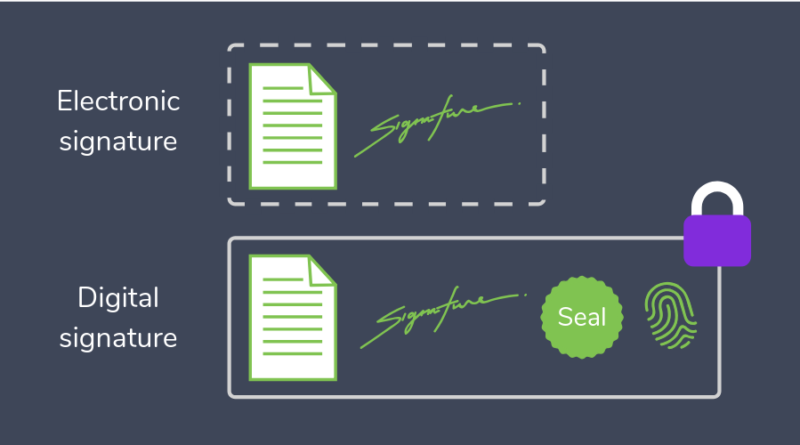Electronic Signatures vs Digital Signatures – The Difference
The debate on Electronic Signatures vs Digital Signatures is reaching hype among uninformed people. Electronic signatures have been in existence legally for almost 20 years. When the USA decided to legalize it and made it mandatory for all the corporate firms to adopt it. Having an e-signature enhanced the firms’ performance by saving a lot of time and productivity. Compared to the old times when the signatures used to be done manually.
With so much digital advancement happening. There is still some confusion or lack of knowledge when it comes to the e-signature counterpart, the Digital signature. But before we go through the differences between them. Because trust me, there are a lot of them, let’s look at what these two terms signify.
Electronic Signature
An e-signature is a virtual signature equivalent to a real signature specifying that the signer has accepted the documents’ contents. E-signature can be a sign, sound, or a simple click on a box. People can click the photo of their real signature on a paper and upload that on the document. Or sign on the document itself with the help of a stylus. If there screen is a touch screen, that allows the users to sign on the soft copy itself. There are multiple e-signature platforms available online. Where you can sign any kind of document legally with ease and enhance your business and its activities. The main feature of e-signature is that the signer has the intention of signing the document.
Features of E-signature
- The e-signature denotes the person is willing to sign the document or contract that is done between two parties.
- It can be an electronic sign done on the touch screen pad with a stylus, a sound, or a photo of the manual sign taken and uploaded.
- E-signatures helpful in verifying the identity of the parties involved when the document has been signed.
- It is used as a tool to execute a contract where signatures are required, and a party is not available at the moment.
Digital Signature
A digital signature comes under a broader category when it comes to electronic signatures. It uses asymmetric cryptography where the fingerprint of the person is verified with the document. The digital signature does not display the picture of the signature, but it is linked to a document or certificate by an application that is generally created by the company. The digital signature is very difficult to do tampering with as it gets embedded in the system.
Features of Digital signature
- A digital signature is used to verify the authenticity of the document or contract to see if it has not been forged.
- It is not possible to tamper with a document that has a digital signature on it.
- It has long-term access, and the signatories do not need to rely on the vendor’s presence to continue checking the authenticity of verification.
Difference between Electronic Signature and Digital Signature
| ELECTRONIC SIGNATURE | DIGITAL SIGNATURE |
| An electronic signature is a virtual signature that can be a photo clicked and uploaded of a real signature or a sound. | A digital signature uses digital certificates and verifies the fingerprints of the signer for authenticity. |
| Electronic signatures are easy to tamper with. | It is not possible to do tampering with a digital signature. |
| Electronic signatures are hard to verify. | Digital signatures are hard to deny once they are verified. |
| The date and time in electronic signatures are in a separate place, so they are open to changes by anyone. | Digital signatures are time-stamped, so it is easy to locate the identity of the person in the court of the law. |
| It is done with the intention to secure the document. | It is done with the intention to sign the contract. |
| The security features in an electronic signature are less. | The security features in digital signatures are more. |
| The main types of e-signatures are verbal, electronic ticks, or scanned signatures. | Common types are based on Adobe and Microsoft. |
Conclusion – Electronic Signatures vs Digital Signatures
It is clear from the above discussion that there is a vast difference between an e-signature and a digital signature. One is used with the intention to sign the document, and the other is used to secure the document. Having an electronic signature facility is very important nowadays to keep pace in the high competition, the same as it is important for business owners to have perfect knowledge about the problems and failures that the business faces and how to overcome it—reading different kinds of books or real stories of businesses on online platforms about how these practices have helped them can always be beneficial.




